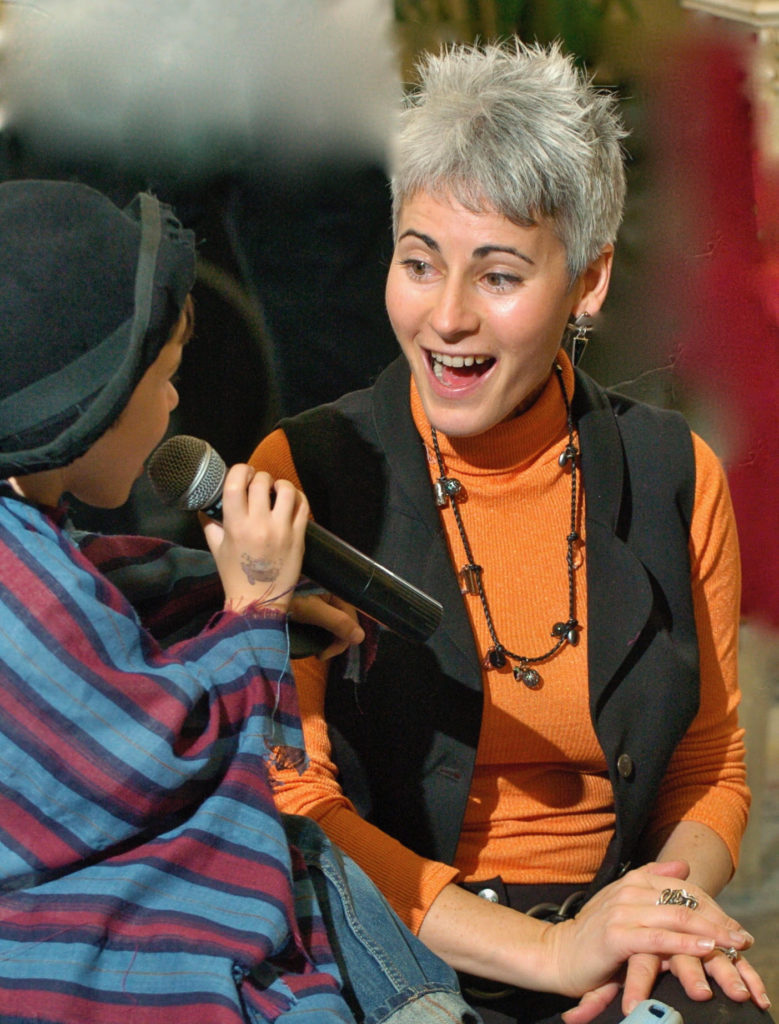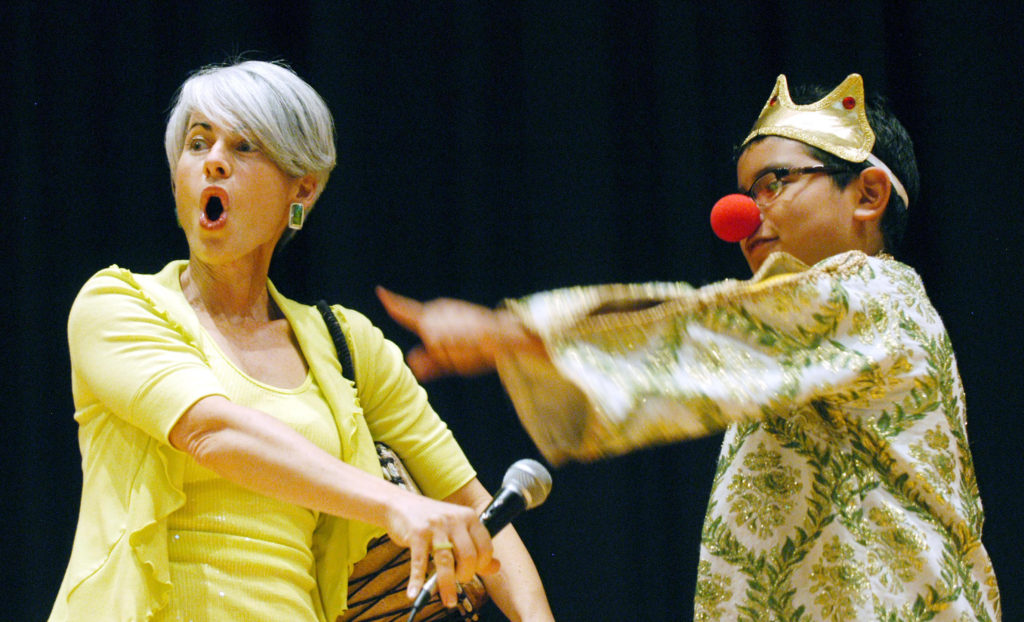
Experiential Learning: Social-Emotional Growth Through Storytelling
By Eva Grayzel
The value of storytelling
Story is a powerful way to teach concepts, enhance retention, boost self-esteem, and impart values while addressing many learning styles. I’ve been a professional storyteller and performance artist for 30 years. Every program or performance is an opportunity to give a child the gift of feeling like they are a star. Physical or verbal challenges make no difference in my world. When a child participates in my story, they shine.
Storytelling makes learning fun. First, I’ll tell you a couple of stories about indelible moments working with children using my interactive storytelling techniques. Then, I will give you pointers for telling a story to a child and how to make it experiential while teaching a lesson. Yes, it’s possible to distract a listener with an engaging story while you are actually teaching a valuable lesson.
 Utilizing storytelling at schools
Utilizing storytelling at schools
At one public school assembly program, when I asked the students to volunteer role-playing characters on stage with me, loads of hands wildly flew up in the air. I always try to select a mix of students, some who raise their hands halfway and sometimes those who just smile but don’t raise their hand at all. A girl in a yellow turtleneck on the aisle in the back caught my eye. She wasn’t raising her hand because she was in a wheelchair. When I began the selection, ‘the guy with the red t-shirt, the girl with the braided hair….and the girl in the yellow turtleneck.’ The teacher sitting beside her waved opposing arms suggesting I should move on. I persisted, ‘Do you want to come up?’ She nodded. I asked the teacher, ‘Can we make this happen?’ She was irritated, but with all the attention on her, she agreed. I continued selecting students as the girl was wheeled up to the steps at the stage, then transferred to special crutches, and with assistance got up the three stairs. I asked her if she could lean against the table until it was her turn. She nodded.
I quickly put a coat on one student, a vest on another, cap to another and a scarf to her. Her character didn’t appear in the story until the middle, but I kept an eye on her making sure she looked comfortable. “The tailor then made that special cloth into a scarf…” I continued telling the story to the audience, as I walked over to her, she took my hand taking a couple of strides toward the center of the stage. With her other hand, she made the appropriate gestures of the character, and when the character spoke, I held the mic in front of her mouth. I walked her back to the table. At the end of the story, the kids took a bow. I will never forget the smile on her face. Not one of satisfaction; Not one of importance. One of pure joy. She was a star and she knew it.
Storytelling and autism
It wasn’t until I performed at The Help Group in Los Angeles that I learned my storytelling technique could also teach social skills to students diagnosed as on the autism spectrum. Some students had no verbal skills. I singled out a few students interested in role-playing a part. Other characters were played as a unit by the whole group. I was telling the story: “Mr. Green asked Mrs. Cheapy for his days pay.” The student made some sounds. Everyone knew what he said because I had just told them in the story what the character said. The audience comprehended everything he said through his gestures and expression. As the narrator of the story, what I say is repeated by the student. The girl playing Mrs. Cheapy would not part with her blanky. So, I put it in the story, “She waved her blanky and said ‘get out of here.’” This story taught a lesson about honesty and gratitude.
I didn’t know behind a dark window at the back of the room stood the parent of the boy who played Mr. Green. After the program, she hugged me telling me she couldn’t believe what her son did in front of his whole class.

Photo: Express-Times Photo | BRUCE WINTER
Storytelling tips
You, too, can use interactive storytelling techniques to teach a concept to a child. When you read a story, try these techniques to make it experiential, memorable and fun.
- Read a sentence then repeat it in your own words speaking in a way the listener will understand best. Repetition helps many learners.
- As you read, clearly gesture to the child when you mention a character you want them to play, then…
- Give him/her (the character) something to SAY: Invent dialogue
- Create an action, a movement, something to DO: “A beautiful woman” who stroked her hair, sways her hips; “A sad man” who frowns, drags his feet, hangs his head; “She was confused” and paced the room, bit her nails; “He was shocked” and jumped out of the chair, opened his mouth wide. “She was tired,” and yawned loudly while stretching.
- Add sounds to the story: the wind blew loudly, the birds chirped, the cow moo’ed, the man groaned….
- Add simple costumes to make it fun: hats, scarves, robes. A tablecloth or bedsheet can become a baby, and old person, the wind…
- Create a short two-line rhyme that you can repeat over and over: He tapped the floor and thought some more. He rubbed his chin and said, ‘I’m in.’
- Videotape so you can remember the fun you had and replay for the child.
- Share similarities in a story with your own personal life history. Nothing is more interesting then learning about the people in your life. Infuse your own values to make the story more real and important.

Eva Grayzel, a nationally recognized Master Storyteller and expert on interactive storytelling with 30 years’ experience, enriches learning through the power of story. Eva teaches her unique storytelling techniques to educators nationwide. Her repertoire now includes personal story, a powerful way to build rapport and inspire trust. Eva is the author of two children’s books, Mr. C Plays Hide & Seek and Mr. C the Globetrotter and My Story Legacy, a 12-page guide to document personal stories, a gift more valuable than any material possessions. Learn more at EvaGrayzel.com




